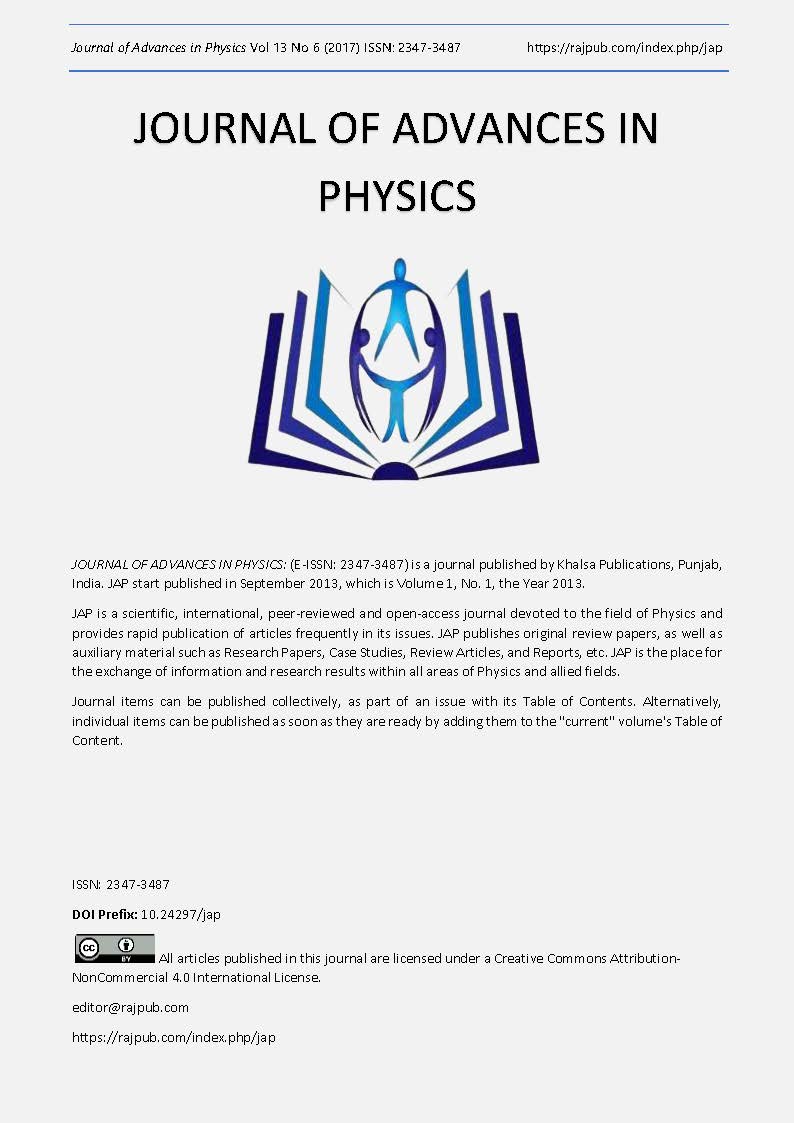Comparative Analysis of SAR and Temperature Rise within Head Tissues Exposed to Radiofrequency Radiation From GSM Transceiver Base Station in South-South Nigeria.
DOI:
https://doi.org/10.24297/jap.v13i6.6086Keywords:
SAR, Temperature Rise, Thermal Indices, GSM, Radiofrequency RadiationAbstract
In this study, measurement of radiofrequency exposure due to cellular transceiver base station antennas was carried out. Both far and near field measurements of electric field and magnetic field level were made around selected transceiver base station antennas in selected South-South States Nigeria, with the aid of frequency-dependent equipment (CORNET, Electrosmog meter ED78S EMF RF/LF Dual mode model). The results obtained were analysed using thermal related indices such as specific absorption rate (SAR) with peak value in cerebrospinal fluid-CSF (0.095358W/kg), temperature rise with peak also in CSF (0.008381 oC). These results were compared with threshold values of 2 W/kg and 0.08 W/kg for SAR (over the head and whole body respectively), and 1oC for temperature rise as set by International Commission of Non Ionizing Radiation Protection (ICNIRP). The results indicate that none of the network operators in the study area have SAR above the recommended threshold value with the worst case observed in Calabar.
Downloads
References
[2]. Adheed, H. (2012). A theoretical approach for SAR calculation in Human Head Exposure to RF Signal. Journal of engineering and development, Vol. 16(4), P. 304-313.
[3]. Branko, S., and Gjorgi, S., (2012). Assessment of SAR in the Human head, caused by mobile phone with measurement of emitted electric field. RAD2012. P.25-27.
[4]. CORNET Microsystems Inc. manual, (2012). 1400 Coleman Ave #C28 Santa Clara, www.cornetmicro.com CA 95050 USA ED78SV1.0. P. 1-2.
[5]. Gabriel C., (2006). Personal communication. http://books.google.com.ng/books. Retrieved February, 2016, P. 222.
[6]. ICNIRP (1998). International Commission on Non-Ionizing Radiation Protection - Guidelines for limiting exposure to time-varying electric, magnetic, and electromagnetic fields (up to 300 GHz), Health Physics.Vol. 74(4), P. 1-32.
[7]. John, M. O. and Ronald, C. P., (2001). Safety standard for Exposure to RF Electromagnetic Fields. Inc./Bell Labs, Murray Hill, New Jersey, USA. P. 445.
[8]. Mihir S.,(2015): Analytical Heat Transfer. Department of Aerospace and Mechanical Engineering University of Notre Dame Notre Dame, p. 2.
[9]. NRPB Document, Vol. 4(5), 1998. Board Statement on Restrictions on Human Exposure to Static and Time Varying Electromagnetic Fields and Radiation; HMSO Books, London. Should be read in conjunction with NRPB Report R301 July 1993.
[10]. Speigel, R. J., (1989). Comparison of Finite-Difference Time-Domain SAR Calculations with Measurements in a Heterogeneous Model of Man. IEEE Trans. on Biomedical Engineering, Vol. 36(8), P. 849–855.
[11]. Yolanda, R., Javier, B., Evangelos, M., Todor, S., Carlofiga, T. and Charalambos, M., (2008). Electromagnetic Fields and Radio Frequency Identification and Their Effect in our Bodies. 12th WSEAS International conference on System, Heraklion, Greec. P. 33-40.
Downloads
Published
How to Cite
Issue
Section
License
 All articles published in Journal of Advances in Linguistics are licensed under a Creative Commons Attribution 4.0 International License.
All articles published in Journal of Advances in Linguistics are licensed under a Creative Commons Attribution 4.0 International License.




